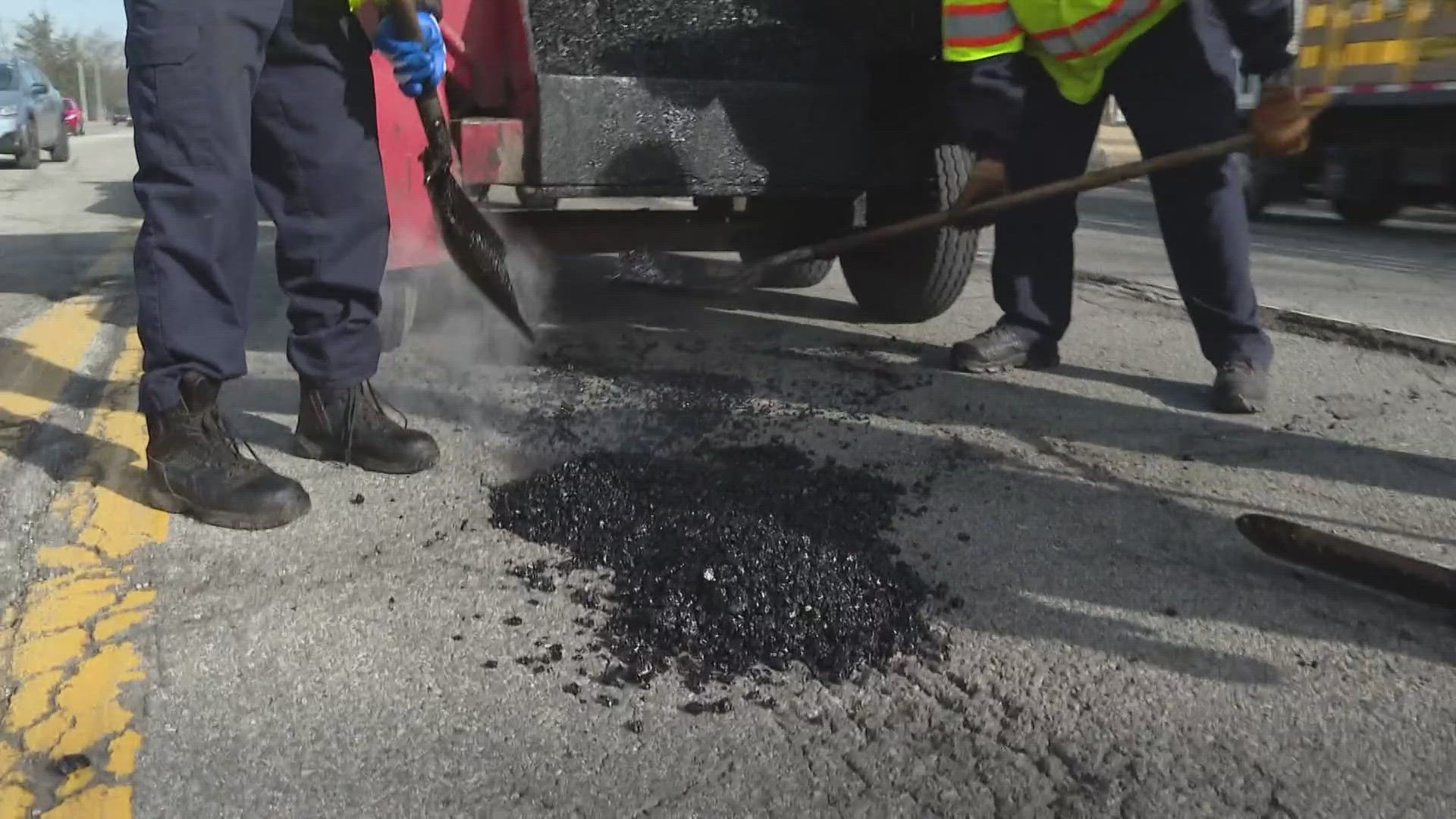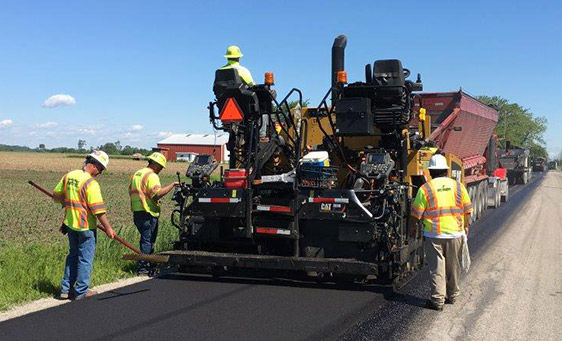Hot Mix Asphalt Paving: Your Portal to Costs Angled Parking Solutions
Wiki Article
Opening the Keys of Warm Mix Asphalt Innovation
Discovering the midsts of hot mix asphalt technology reveals a world where exact formulations and thorough processes converge to shape our roads and infrastructure. The fusion of binders, fillers, and accumulations isn't merely a building and construction task however a tactical orchestration of toughness and efficiency. As we peer into the intricate dancing of components, a tapestry of durability and sustainability unravels. What lies below this surface of asphaltic proficiency, and what tricks wait to be unveiled in the world of paving technologies?Relevance of Warm Mix Asphalt
Hot Mix Asphalt plays a vital role in modern-day infrastructure growth as a result of its sturdiness and cost-effectiveness. As one of the most typically made use of leading material for roads, freeways, and parking area, Warm Mix Asphalt provides a series of advantages that contribute to its relevance in building and construction projects. One essential benefit is its capability to endure hefty website traffic loads and extreme climate condition, providing a lasting and trusted surface area for transport networks. In Addition, Hot Mix Asphalt is affordable in both initial building and construction and long-term maintenance, making it a favored option for numerous framework tasks.The resilience of Warm Mix Asphalt stems from its structure, which includes accumulations, binder, and filler products that are thoroughly selected and blended to meet details efficiency requirements. On the whole, the value of Hot Mix Asphalt in framework development can not be downplayed, as it proceeds to be a cornerstone of contemporary construction methods.
Elements of Asphalt Mixes
The make-up of asphalt mixes includes carefully selected accumulations, binder, and filler products that are important for achieving specific efficiency demands. Accumulations are the primary component of asphalt mixes, supplying strength and stability. These accumulations can be natural, such as crushed rock or smashed rock, or synthetic, like recycled products from old sidewalks. The binder, usually bitumen or asphalt concrete, holds the accumulations together and supplies versatility and longevity to the mix. The selection of the binder is vital as it straight influences the mix's efficiency in various weather. Fillers, such as hydrated lime or Rose city concrete, are made use of to enhance the mix's workability and aging resistance. Angled Parking.The mix and proportion of these components play a significant role in identifying the high quality and performance of the asphalt mix. Designers carefully design the mix to meet certain requirements, considering elements like traffic volume, environment problems, and sidewalk life-span. Correct option and harmonizing of aggregates, binder, and fillers are essential for creating durable, long-lasting asphalt sidewalks.
Combining and Manufacturing Methods

Once the aggregates are selected, the binder, frequently asphalt concrete, is added to bind the materials together. The binder's quality and quantity considerably influence the mix's stamina, resistance, and flexibility to ecological variables. In addition, fillers like moisturized lime or Portland cement might be included to boost details features of the asphalt mix, such as its workability or wetness resistance.
Throughout production, the aggregates and binder are heated up, commonly in between 250-325 ° F(121-163 ° C ), to promote blending and ensure appropriate finishing of the aggregates. The blending procedure should be detailed to accomplish a homogeneous mixture that advertises the wanted efficiency features of the asphalt. Different techniques, such as set mixing or drum blending, are used to achieve regular and premium asphalt blends for construction jobs.
Elements Influencing Asphalt Performance
Factors influencing asphalt efficiency incorporate a range of variables that influence the longevity, longevity, and general high quality of asphalt sidewalks. One key element is the high quality of materials used in the asphalt mix.
Environmental conditions additionally influence asphalt efficiency. Temperature level variations, moisture infiltration, and website traffic tons can all influence the structural stability of the sidewalk. Design factors to consider, such as pavement density and water drainage, are vital in guaranteeing the long-lasting efficiency of the asphalt pavement. By very carefully considering these aspects, designers and contractors can optimize asphalt performance and enhance the life span of pavements.
Lasting Practices in Asphalt Modern Technology

Furthermore, the development of warm-mix angled parking asphalt (WMA) innovations has actually acquired traction recently. WMA enables the production and positioning of asphalt blends at lower temperatures contrasted to standard hot-mix asphalt, leading to reduced power usage and greenhouse gas emissions. The use of permeable asphalt mixes can aid mitigate stormwater drainage issues by permitting water to infiltrate via the pavement and right into the ground, promoting all-natural water filtering and charge procedures. By carrying out these sustainable methods, the asphalt industry can add to building a much more eco-friendly and resistant framework network.
Verdict
In verdict, warm mix asphalt technology plays an essential duty in modern infrastructure development due to its sturdiness and cost-effectiveness. By meticulously stabilizing parts, using proper mixing techniques, and considering various factors, engineers can produce premium asphalt blends that endure heavy traffic loads and harsh weather. Welcoming sustainable practices, such as using warm-mix technologies and recycled materials, better boosts the ecological friendliness of asphalt technology.
Mixing and production strategies in warm mix asphalt innovation involve the specific mix and processing of accumulations, binder, and fillers to produce a resilient and high-performance asphalt mix.Aspects influencing asphalt efficiency include a range of variables that influence the sturdiness, longevity, and total high quality of asphalt pavements. Sustainable methods in asphalt technology incorporate different campaigns aimed at lowering the environmental influence of asphalt production and paving procedures. By integrating reclaimed asphalt pavement (RAP) and recycled asphalt shingles (RAS) right into new asphalt blends, the industry can dramatically minimize the consumption of raw materials and energy, while additionally reducing land fill waste.
WMA enables for the manufacturing and placement of asphalt blends at lower temperature levels compared to traditional hot-mix asphalt, resulting in minimized power usage and greenhouse gas exhausts.
Report this wiki page